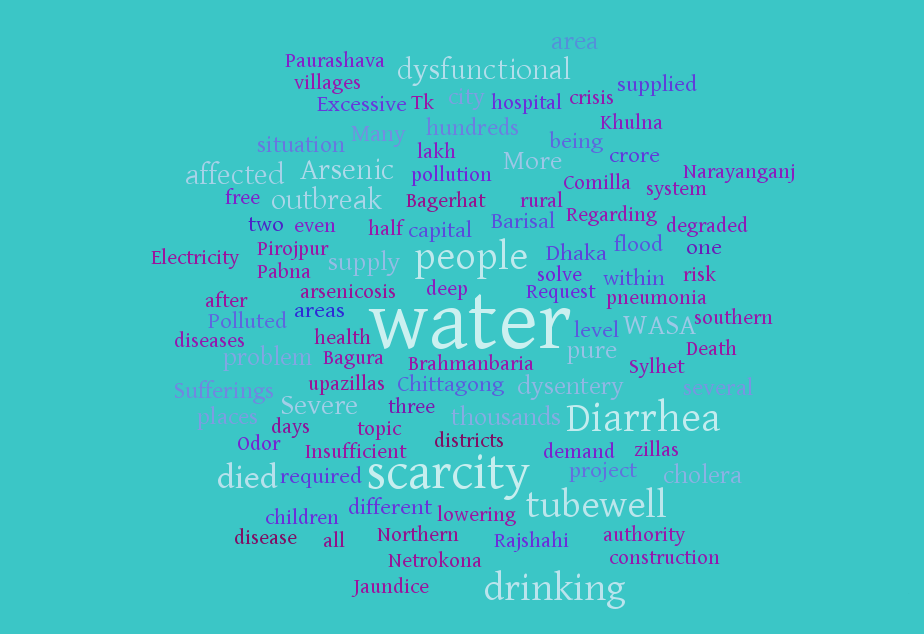Alex Fischer (University of Oxford), Sadia Chowdhury (University of Dhaka), and Tazrina Habib Ananya (UNICEF Bangladesh)
Defining and prioritising public concern around a specific drinking water security narrative is challenging due to overlapping environmental, social, political, and technical risks. Institutions responsible for delivering services are faced with the increasingly complex challenges to define safety thresholds, measure water quality, manage for supply variability, ensure continuous infrastructure functionality, and deliver equitable and affordable access for users, dimensions formalized through targets set by the global Sustainable Development Goals. As these concerns are debated and seen in new ways, partially as a result of more data and monitoring techniques, they still need to be interpreted to raise public attention and increase awareness. This public narrative is constructed through the interaction of political, scientific, and media discourses. The process is part of a broader public, often political, negotiation at national and local levels aiming to explain safety definitions, increase awareness of future dangers, demonstrate development progress, and explain results of past policy decisions.
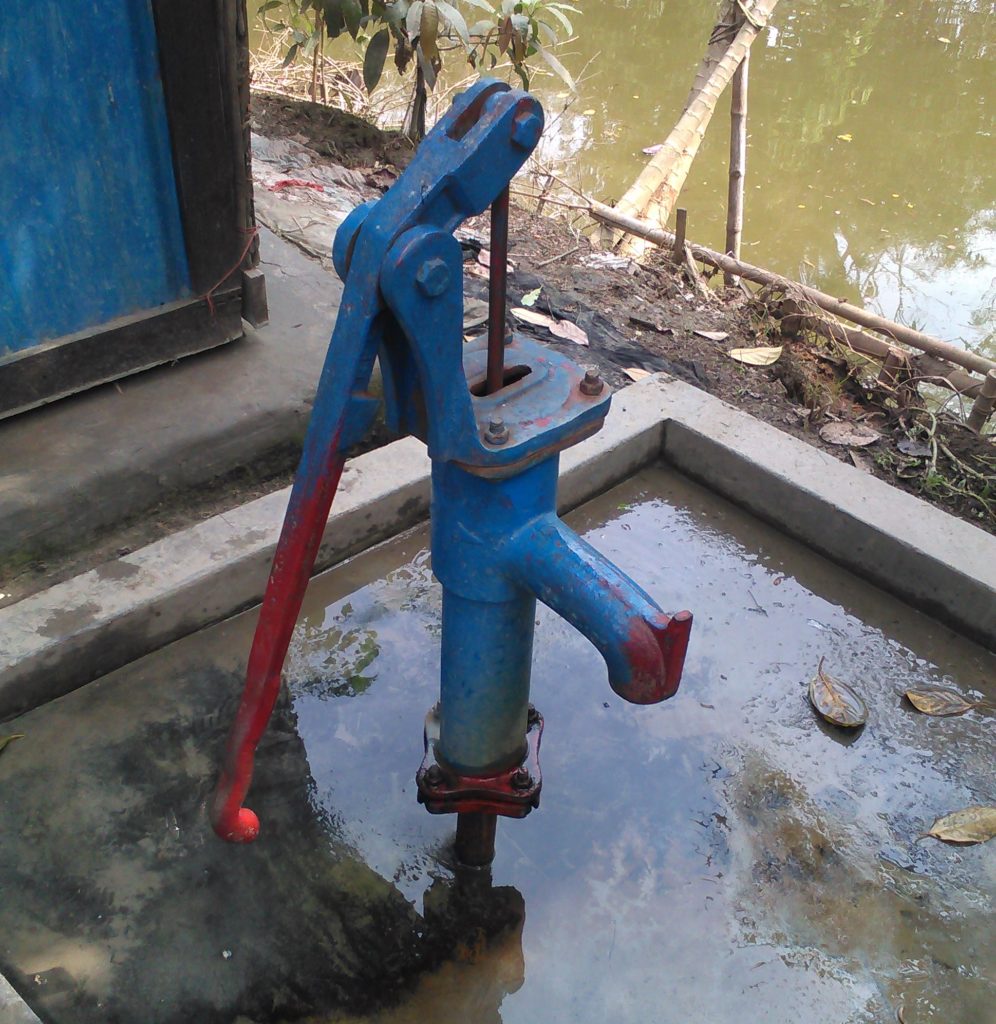
The mass media remains one of the main conduits for making risks visible by communicating them to the public. Although scholars widely agree on the discursive role of the media in manufacturing concerns, they have identified gaps in the methodological toolkits and frameworks for comparing how the media does this across sources and years.
In the recent journal article, “Constraining Risk Narratives: A Multidecadal Media Analysis of Drinking Water Insecurity in Bangladesh”, Alex Fischer explores how these narratives are constructed and debated within the specific context of drinking water sector across Bangladeshi newspapers and in relation to academic and policy texts. A set of “risk discourse filters” are proposed to interpret the socio-political processes constructing and managing these framings. The framework builds from a body of literature including content analysis methods from communication and media studies, interpretation from Herman and Chomsky’s Manufactured Consent, and framing from the core theories discussed by Ulrich Beck, specifically in his seminal theory of Risk Society. This can be explored through several filters:
- Understanding the production and construction of risks through the content focus and repetition;
- positioning within the news cycle to allocate severity and degree of attention;
- attribution of blame in articles;
- allocation of responsibility to specific actors, or avoiding directly allocation;
- distribution of concerns between geographies and across populations;
- filtering and legitimising information;
- and techniques to maintain control over the narrative.
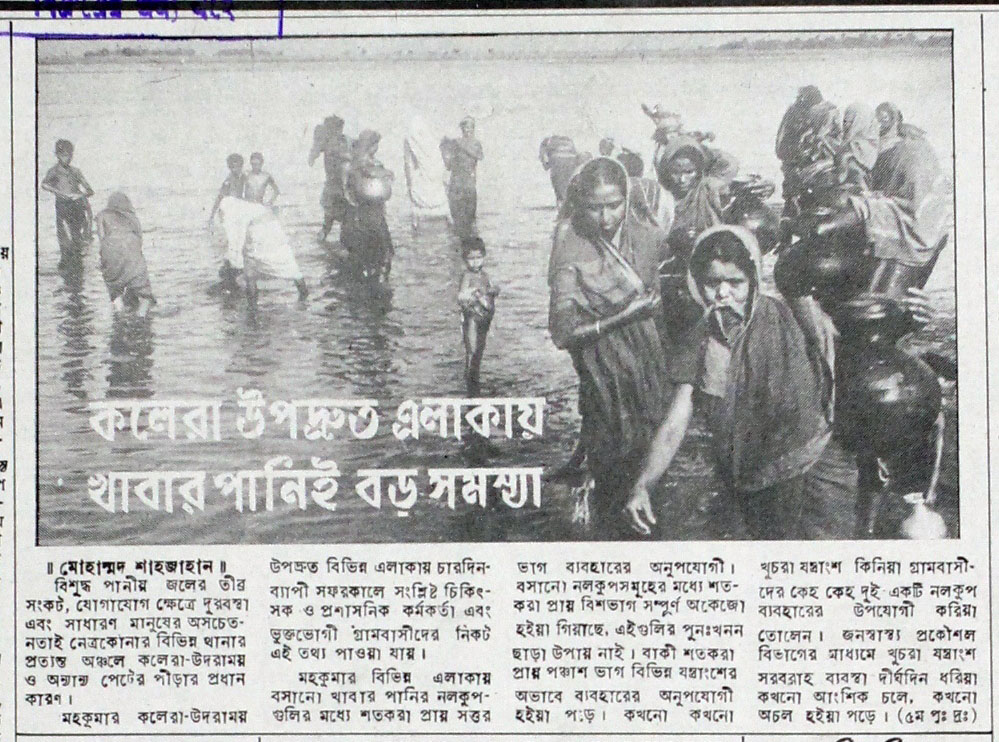
We apply this to the context of Bangladesh using an inventory of newspaper articles, first across three years of content from UNICEF’s daily media clippings covering 29 newspapers; and second by gathering and analysing every drinking water related article published in the Ittefaq newspaper over 36 years (a total of 3,211 articles). Ittefaq is one of the oldest, continually published and widely circulated newspapers in Bangladesh, publishing for the entire period of the study.
The results suggest that the international media has interpreted sustainable development programs in Bangladesh as being constrained by water insecurity. We argue however that the reverse is also occurring as the national media’s coverage shapes and constrains which issues are being discussed and prioritised as a problem in the national and development narratives.
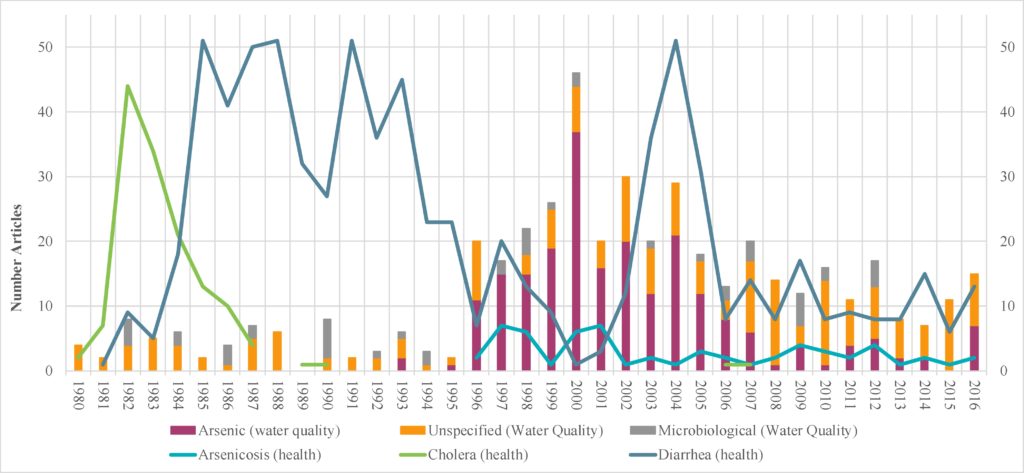
We saw this occur in a few different ways in the newspaper inventory. The explicit coverage of cholera was prominent on the front pages of the Ittefaq in the early 1980s. This created a sense of urgency by describing the problem in terms of mortality rates and specific geographic areas of outbreaks. However, by the late 1980s, cholera ceased to be identified or discussed in any Ittefaq article and was instead replaced by articles with titles focused on the number of treated diarrhoea cases. This diminished certain concerns by describing the cases as an outbreak after being contained, not as dangerous as the mortality rates. Diarrhoea related articles declined in total number and shifted off the front page into the national news section during the mid-1990s, at the same time arsenic contamination concerns entered media reporting.
In contrast to cholera and diarrhoea coverage, arsenic reporting focused primarily on water quality and the uncertainty of the scale of exposure and aquifer contamination, not on the health impacts. This constructed a different framing of the concern. While arsenic has long been labelled as a national crisis, there were very few front-page articles elevating the concern, as contrasted to previous front-page prominence of cholera articles. In the past decade, many articles have referred to water quality in general terms, however, very few articles discuss multiple parameters at the same time.
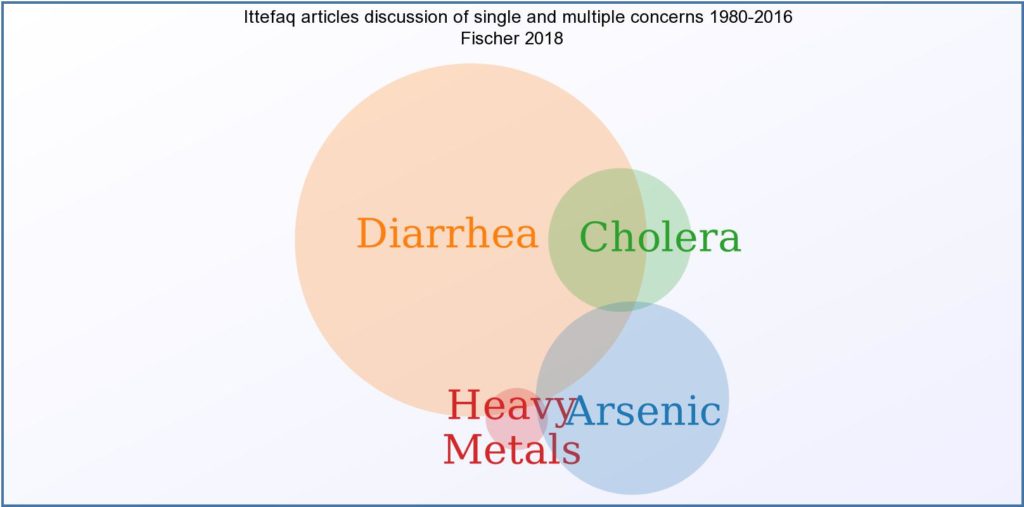
We interpret these results in relation to the politics of sustainable development and state-building narratives. The Fischer paper found that the media was generally careful in selecting which concerns were emphasised and how they allocated responsibility. The data also suggests that media outlets can shape risk narratives, often contrasting technical assessments of vulnerability or exposure distribution. This reinforces sociologists’ theories of a contingent relationship between risk representations and politics of national development agendas.
We are currently completing additional analysis of this data to look at differences between urban and rural coverage and how the changing nature of drinking water concerns, which are increasingly linked to the unintentional consequences of previous decisions, shape governance approaches focused on provision of infrastructure access.
For more discussion and analysis, please see the recently published journal paper.

